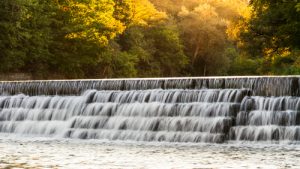
U.S. Rep. Frank Lucas (R-OK) led a hearing on Tuesday that explored the importance of financial and technical assistance in maintaining rural watershed infrastructure that provides critical protection to communities and helps restore natural resources.
Lucas, the chairman of the House Agriculture Subcommittee on Conservation and Forestry, said investments in small watershed projects have prevented damage and destruction in rural areas for more than 70 years. Watershed protection projects often focus on preventing floodwater damage, such as by building flood control dams and by seeking to stabilize streams and banks to minimize erosion.
“But as these investments rapidly age so too does the protection and certainty they provide to the communities they serve,” Lucas said. “We must continue making modest investments in watersheds now so it pays off for all of rural America in the future.”
Jimmy Bramblett, deputy chief of programs at the Natural Resources Conservation Service (NRCS), testified that nearly $7 billion is needed to address public safety issues for roughly 2,000 structures identified as “high hazard.” Furthermore, most NRCS watershed dams are more than 50 years old, and require upgrades today to help prevent more expensive investments on the facilities later, he said in written testimony.
Nearly 12,000 small flood prevention dams have provided both economic and conservation benefits to rural communities since 1948, Lucas said in his opening remarks, and nearly 5,500 structures will have exceeded their useful lifespan by the end of 2017.
“Both watershed construction and rehabilitation are necessary and important to maintaining and expanding our rural infrastructure, which is why I made these programs a priority, helping secure numerous hard-fought gains over the past several years,” Lucas said. “For example, in the 2014 Farm Bill we created partnership opportunities to target and leverage federal conservation funds through the Regional Conservation Partnership Program.”
Congress also allocated $250 million in mandatory funding for watershed rehabilitation in fiscal year 2017, Lucas added.
“In times of excess rain and flooding, communities across rural America depend on watershed structures to protect their homes and livelihoods,” Michael Conaway (R-TX), the chairman of the House Agriculture Committee, said. “Watershed structures are vital to the communities they serve, and as we look to maintain and update our rural infrastructure, these projects are prime examples of investments that pay off in the long run.”



